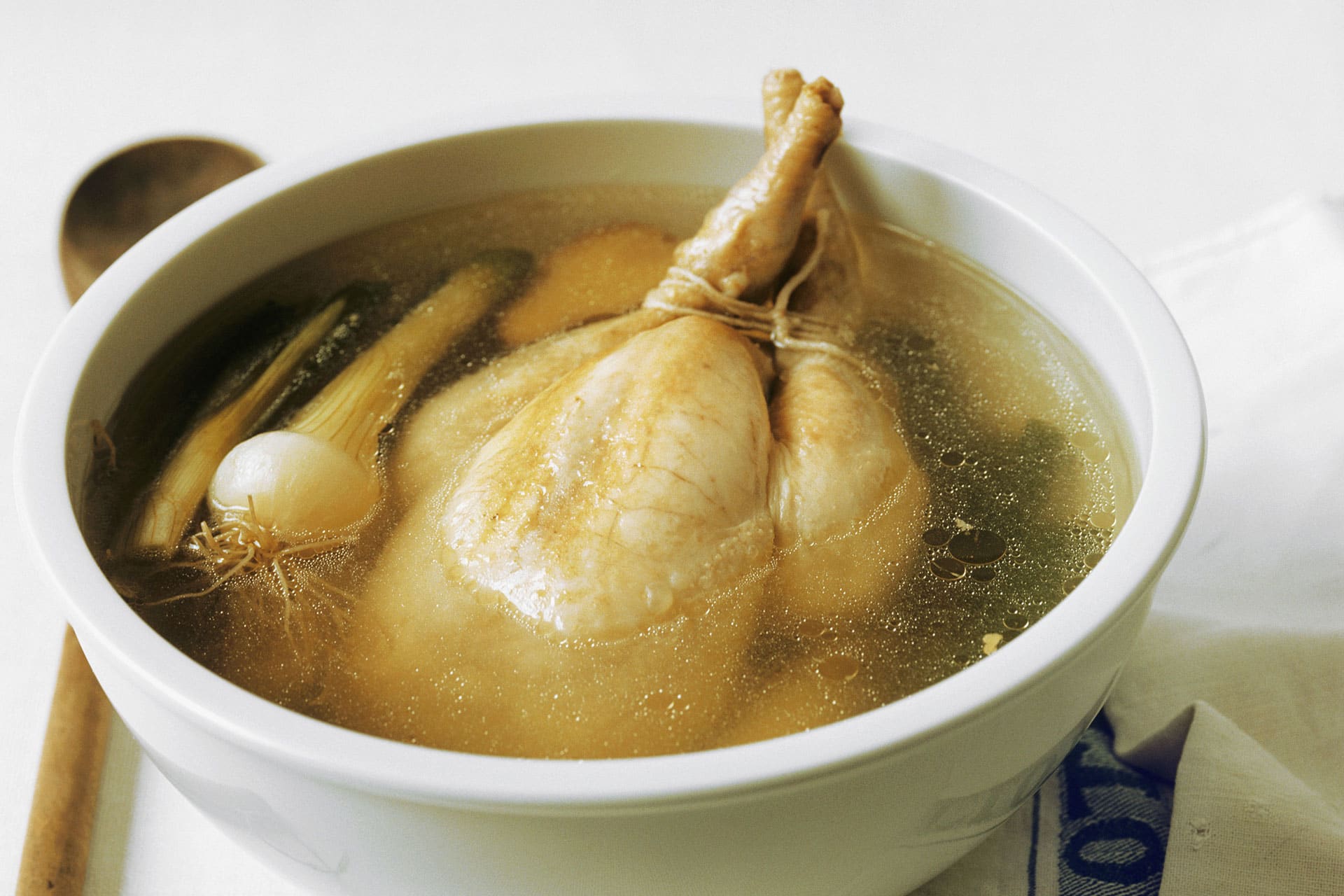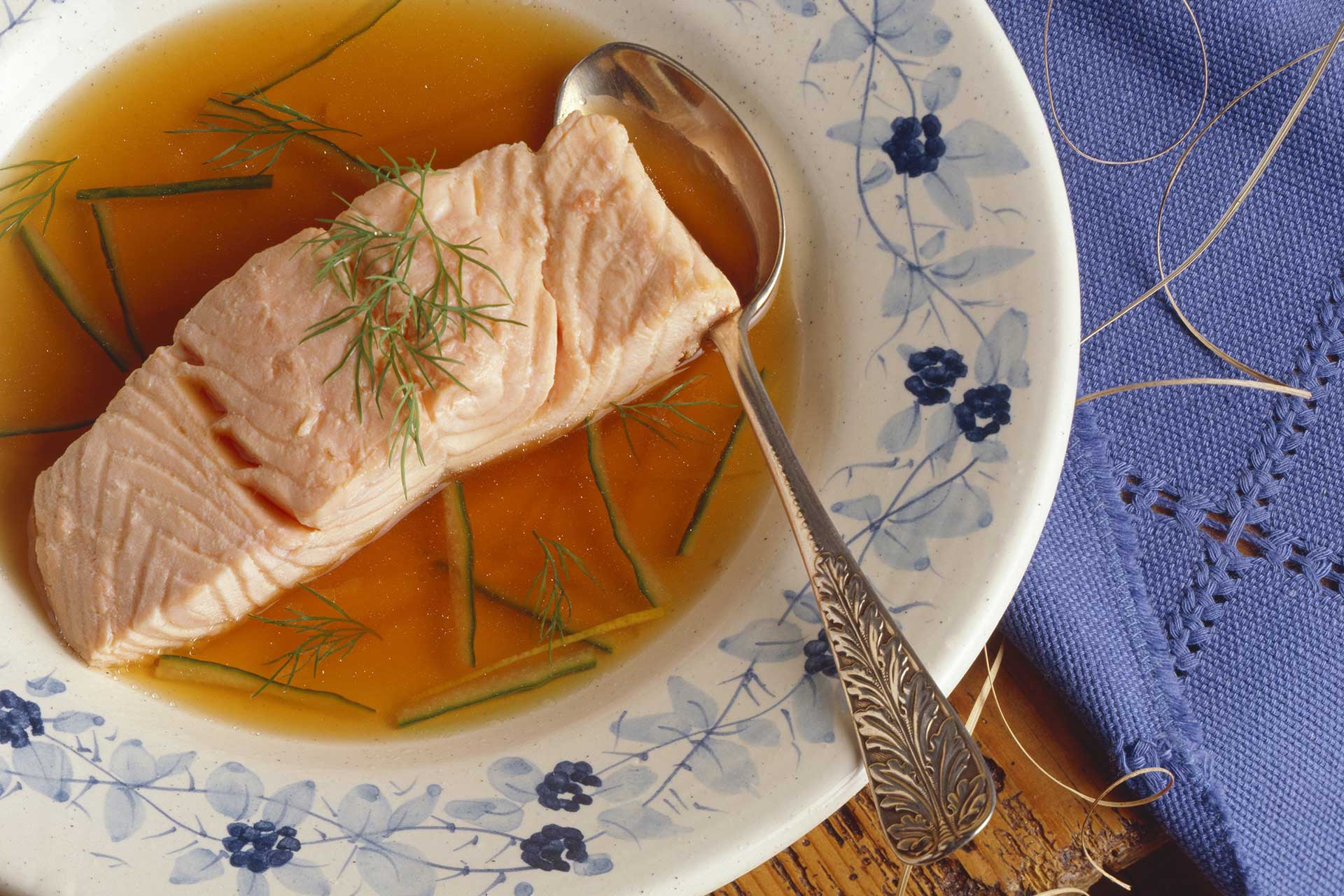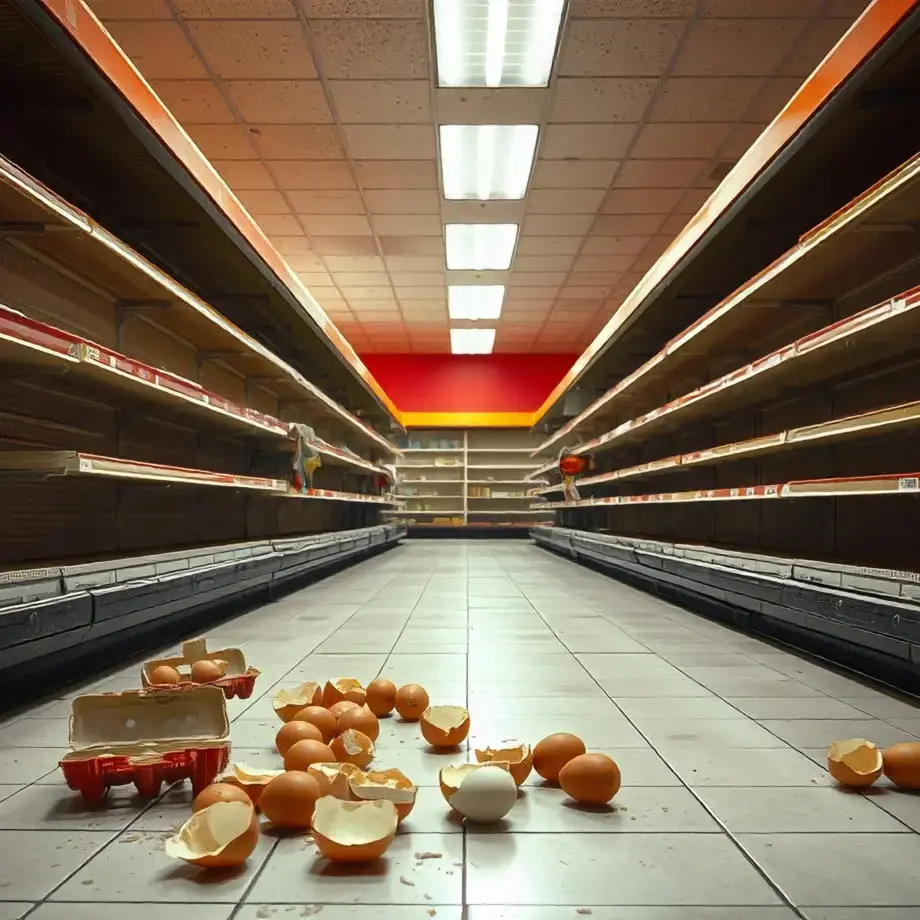Poaching is one of the most commonly misunderstood cooking techniques. On the surface it seems simple. In many ways it is. But it’s also deceptively so.
Poaching food with naivety or complacency often results in a bland, homogenous taste. But do it well – even with just a little knowledge – and the right flavours become beautifully infused instead, aided by irresistible and tender textures.
What is poaching cooking?
Poaching is one of the so-called “moist heat” methods of cooking, along with boiling and simmering. Of the three, poaching uses the lowest heat, boiling the hottest, and simmering somewhere in between.
Liquid poaching and butter poaching
Poaching generally means cooking foods in water, stock, or wine, but you can use any liquid within reason, such as vinegar or fruit juice. Milk or coconut milk can even be used to poach fish or chicken. If desired, you can also add aromatics to the liquid in order to enhance the flavour profile of your food. For good poaching technique, make sure you add all the ingredients to the pot when the liquid is cool, then gradually increase the heat without bringing it to a boil
Another method, butter poaching, combines butter with the liquid. This tends to be reserved for cooking fish and seafood. The butter must first be emulsified by boiling it with the liquid (meaning the two are mixed together so they won’t separate). The result is called a beurre monte, which is then used for poaching at lower temperatures that, again, never break into a boil.
Variations on poaching technique
Poaching can be divided into shallow and deep poaching techniques. The difference between the two is exactly as you might expect. In shallow poaching the food is only partially submerged, often stood on top of the aromatics. In deep poaching the food is fully submerged.
An increasingly popular method of slow poaching is sous vide. This involves vacuum sealing the food in a plastic bag first and cooking at a consistent low heat. Doing so creates a perfectly uniform texture throughout. Sous vide obviously renders the use of aromatics and liquids other than water pointless.
Advantages of the poaching technique
The most obvious advantage to poaching is for health reasons, as the food isn’t being cooked in fat, it’s generally quite good for you.
Since poaching is done at a lower heat than boiling, it’s preferable for cooking delicate proteins like chicken, eggs and fish, as well as some vegetables, and even fruits. Poaching is able to break proteins down without drawing moisture from the food. When done correctly, this not only benefits the food’s natural flavours, but also preserves its structure. That means poaching is quite forgiving when it comes to overcooking. Not only will over-poached food not burn, it won’t disintegrate either.
As poaching cooks food quite slowly, it also does so more evenly, providing far smoother, more consistent textures.
Disadvantages of poaching
Similar to boiling food, poaching can cause nutrients to be lost in the water to a greater degree than steaming. This downside is avoided in sous vide cooking, but the extent to which chemicals from the plastic cooking bag effect the food is debated, and there can be further health risks from cooking at a temperature too low for pasteurisation.
Poaching is also a technique that requires patience, because rushing it is sure to backfire. While its slow infusion can highlight some flavours, other desirable notes will be sacrificed due to the lack of browning. Browning while cooking can be important because it is a telltale sign of a Maillard reaction, a chemical transformation in food that makes grilled meat, caramelised onions, and other crispy delicacies so appetising.










